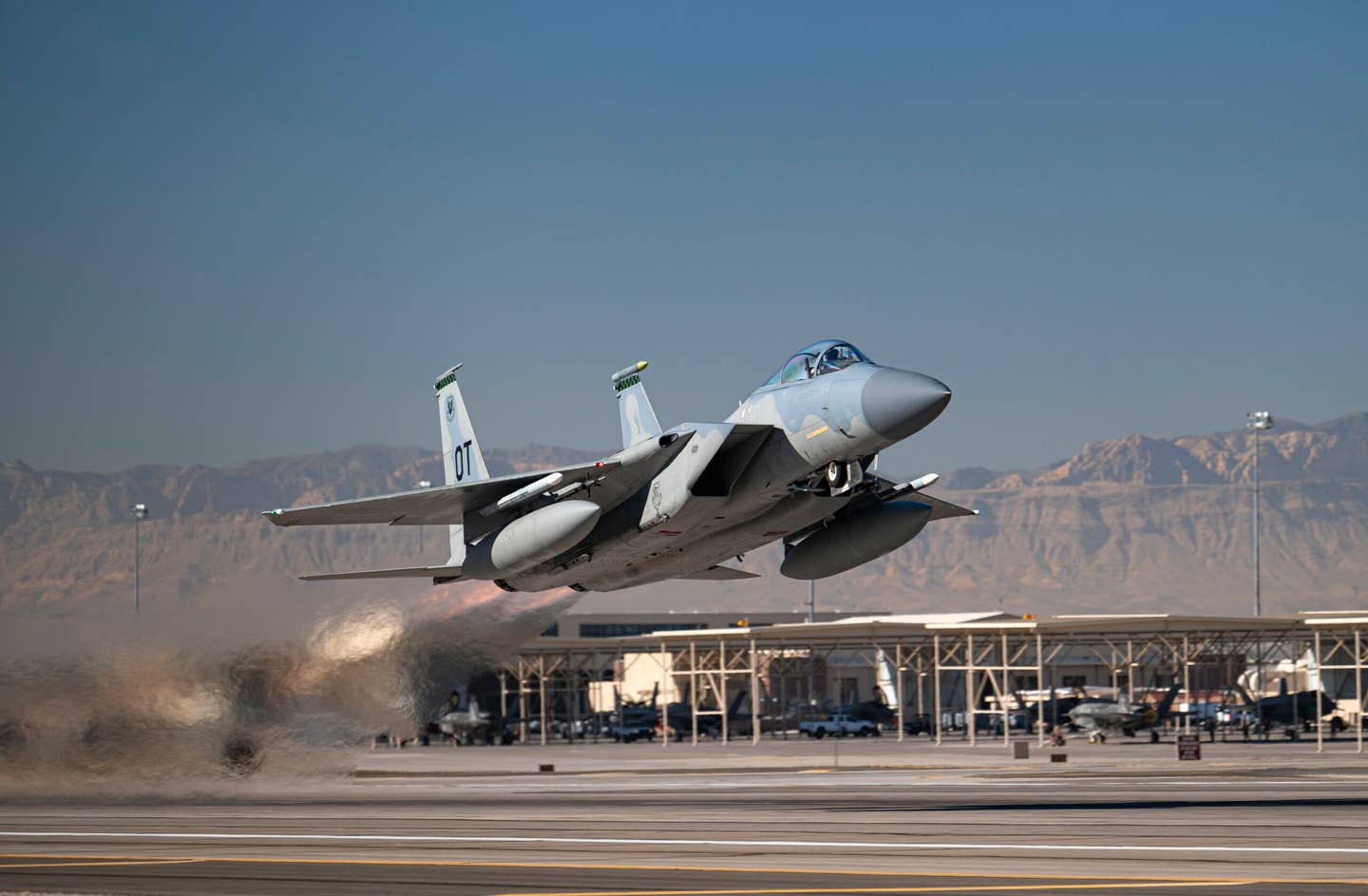U.S. Air Force is Short 1,650 Pilots, Report Says
The shortage of fighter pilots has prompted the service to staff operational units with field grade officers, a service official said.

The USAF reported it employed 13,789 active duty officers with a pilot aeronautical rating in 2021. [Courtesy: Nellis Air Force Base]
The U.S. Air Force is short 1,650 pilots and has brought back retired pilots to help fill staffing gaps created by a lack of company-grade officers, according to a new report.
“That’s an improvement over last year, where we were just over 1,900 pilots short," Maj. Gen. Albert Miller, Air Force director of training and readiness for operations, told the Federal News Network recently. "We see that as a positive for the Air Force, but there’s still a lot of work to be done to get us back to where we want to be.”
““I think we’re making gains to attack the pilot shortage. It’s just going to take a while to correct.”
Col. John O’Dell, military deputy director for Training and Readiness, Aircrew Task Force, U.S. Air Force Headquarters
According to service data, USAF reported it employed 13,789 active duty officers with a pilot aeronautical rating in 2021.
The largest gaps are found with the company-grade officers who typically fly, and among fighter pilots, where the service is currently experiencing a shortage of 1,100 airmen, Miller said.
More experienced field-grade officers are being pulled to backfill the pilot positions.
A lack of sufficient company grade officers in the pipeline now means there will be fewer to move up into higher positions later. It's a scenario that could take a decade or more to correct, Miller said.
“Today those field-grade officers that would normally be doing staff jobs, working policy and those sorts of things are in the air,” Miller told the Federal News Network. “We prioritize the line flying, so that the operational units are fully manned with the pilots that they need to carry out their operational missions. Those experienced field-grade officers are not filling staff positions.”
The service is making headway, however, according to Miller. Last fiscal year, the Air Force trained 1,380 pilots, which was about 120 more than the year before, according to the Federal News Network report.
Not a Recent Problem
The pilot shortage confronting the Air Force, and the U.S. military as a whole, is far from new. Three years ago and before the pandemic, for example, the Department of Defense (DOD) told Congress it was facing a shortfall of more than 3,000 pilots.
The Air Force is attempting to fill the voids by ramping up strategies to accelerate training and improve retention.
The service has a ballpark target of producing about 1,500 new pilots every year across the service, including the National Guard and Reserve units. Of that amount, the service aims to get 1,100 active duty pilots into the pipeline every year, Col. John O’Dell, military deputy director for Training and Readiness, Aircrew Task Force, U.S. Air Force Headquarters, told FLYING earlier this year. Doing so, he said, establishes a robust foundation of company-grade officers in the ranks to fill out the shortage.
One strategy the Air Force is turning to is the acceleration of new pilot training, which traditionally stretches two to four years. The Undergraduate Pilot Training (UPT) 2.5 program expedites the initial phases of training, and the service is developing a “Civil Path to Wings” program, which accelerates Air Force flight training for civilians, such as airline pilots or hobbyists who have flying experience.
It’s also finding gains by looking within. The Rated Preparatory Program creates a pathway to flight training for active-duty airmen with little exposure to flying to help them compete on Undergraduate Flying Training (UFT) boards.
“I think we’re making gains to attack the pilot shortage,” O’Dell said. “It’s just going to take a while to correct. It’s not something that can be corrected in a single year or two.”

Subscribe to Our Newsletter
Get the latest FLYING stories delivered directly to your inbox






